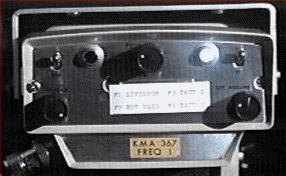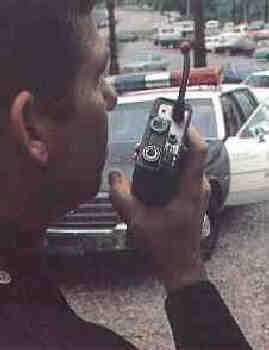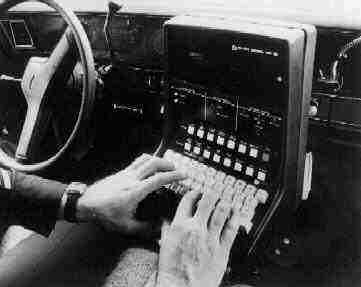
| Over the following years, of course, much upgrading and modernization did occur. The old paper-tape teletypes were replaced by continuous-feed paper machines, and those in turn were replaced by computer terminals. Rotary-dial phones were replaced by touch-tone and Centrex® switching. The "Gamewell" system - street-corner callboxes connected to manual patch-cord switchboards - was converted into part of the regular city telephone network. More radio channels on more dependable frequencies and equipment were put into service. But the actual dispatching system remained virtually identical to that of the 1940s. |  |
In the late 1960's, under the direction of Chief Tom Reddin, the department embarked on a mission to see if and how "space age" technologies could be put to use in the long-term by LAPD. It had become apparent that the dispatching system was quickly becoming obsolete, and would not be capable of handling expected call volumes in the 1970s and 1980s. Reddin's staff began working with Hughes Aircraft Company to study the existing communications system's efficiency and effectiveness, and developed a conceptual design for updating it. In 1972, under Chief Edward Davis, Jet Propulsion Laboratories performed a detailed analysis of those ideas, found them to be practical and technically feasible, and proposed a phased implementation over a number of years. |
E.C.C.C.S. |
|
The culmination of those far-sighted plans was the "Emergency Command Control Communications System" (ECCCS, pronounced "X"), which consisted of five subsystems: |
|
R.O.V.E.R.s
| The first phase was
assignment of voice radio channels to uniformed
divisions, starting with Central Bureau in March, 1981,
Valley Bureau in December of that year, and South and
West Bureaus followed in July of 1982. It should be remembered that, until that time, the technology and costs associated with portable or "handheld" radios made their widespread use impractical in a city as large as Los Angeles. Being able to now equip every officer with his own two-way radio was a real milestone for LAPD and officer safety, as described at the time by Chief Daryl Gates: |
 |
"ROVER, the Remote Out-of-vehicle
Emergency Radio is a two-watt, 8-channel, hand-held radio
that can be utilized in two environments, portable and
mobile. When used as a portable, the officer will always
have communications available. A Request for an Automated
Want/Warrant System (AWWS) check, for a supervisor or
additional information can be made from locations away
from the vehicle. There will be approximately 3,500
ROVERs utilized by field forces to increase officer
availability, making it possible to contact an officer
away from his vehicle on a non-emergency call and
reassign him to one of high priority. To utilize ROVER as
a mobile radio, it must be inserted into the Converta-com,
located under the dashboard. The Converta-Com
automatically connects the portable to a mobile
microphone, a high power mobile speaker and an antenna. |
MDTs
| For digital communication with the Mobile Data Terminals in the police cars, it was decided to use the five former VHF "voice" dispatch frequencies, one for each geographic bureau and one for city-wide or back-up use. |
 |
MDTs give officers a
second means of communication with the dispatch center
and with each other. A significant number of messages do
not require voice communications, such as routine status
changes and database inquiries. The MDTs have typewriter-like keyboards, computer-like monitors, and 16 "status" and other standard message buttons.
|
Important MDT capabilities include:
|